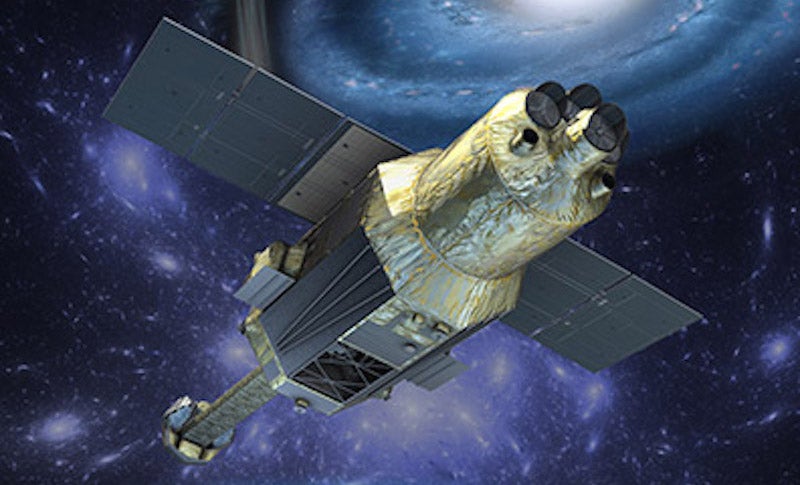
Earlier this week something happened
http://gizmodo.com/no-one-knows-w...
After a long, tense silence, Hitomi sent two very terse messages in response to JAXA’s continued attempts to contact it. But that doesn’t mean anything like full communications—much less control—has been re-established. The messages were so short that JAXA has no new information about either the state of the satellite, or what happened to knock it off kilter in the first place.
There might be some clues in this video of the Hitomi shot by astronomer Paul Maley in Arizona.
You can clearly see the Hitomi in a freefall spin. Maley first saw the satellite rotating like a top on March 28th. He confirmed to Gizmodo that he was still seeing it tumble at the same, consistent rate—one full rotation every 23.5 seconds—as of late last night.
Those spin moves could be the very reason we’re having so much trouble having a longer chat with Hitomi. “Normally the antenna would be roughly pointing at the Earth and it could hear what JAXA is trying to tell it to do. With the tumble it’s a lot harder,” Jonathan McDowell of the Harvard-Smithsonian Center for Astrophysics told Gizmodo.
Still, the fact that it got some new messages through at all is cause for hope that the satellite can yet be recovered. It also may give us a clue to just what happened to throw the satellite’s course off in the first place.
The Department of Defense’s Joint Space Operations Center, who originally spotted the satellite’s shedding debris, said that they haven’t seen evidence that a collision was at fault. That suggests that whatever happened may have happened on the satellite itself. Its fast spin could support that even further. Said McDowell:
“To get the satellite spinning so fast, I think it must have been shooting out gas of some kind - either one of its actual rocket thrusters got stuck on, or possibly the super-cold liquid helium boiled off and acted as if it was a rocket thruster. The cooling system’s been working fine for a few weeks (and apparently some of the data that’s been returned is scientifically exciting) so maybe the stuck thruster is the most likely guess. But it’s just a guess.”
Hitomi did manage to collect a little bit of data before it lost communication with JAXA. “It’s fabulous data, it’s transformational data,” said University of Maryland astronomy professor Chris Reynolds, noting that it would likely be the subject of an upcoming paper. “That’s why there is widespread shock about what’s happening. We all recognize how much fabulous science could come from [Hitomi].”
Before the launch, Japan described the satellite as “essential” to solving the key mysteries of the universe, such as the nature of black holes and the evolution of galaxies. That’s because the Hitomi mission represents a major leap forward in terms of x-ray spectroscopy—one of the many techniques astronomers use to study cosmic x-ray sources. Said Reynolds:
“You learn so much about the universe from taking spectra, that’s how we learn what stars are made of, that’s how we learn what there shift of galaxies are. It’s how we learn about how star formations occur over the history of the universe. In pretty much every waveband all the way from radio up to x rays, there’s so much information you can learn from the universe in [x-ray spectroscopy]”
Of course, gaining insight into those cosmic mysteries now hinges on a single question: Will JAXA be able to successfully recover Hitomi? The answer remains unclear. “We all still have hope,” said Reynolds. “We’re not prepared to declare it lost yet.”
*Additional reporting by Jennifer Ouellette